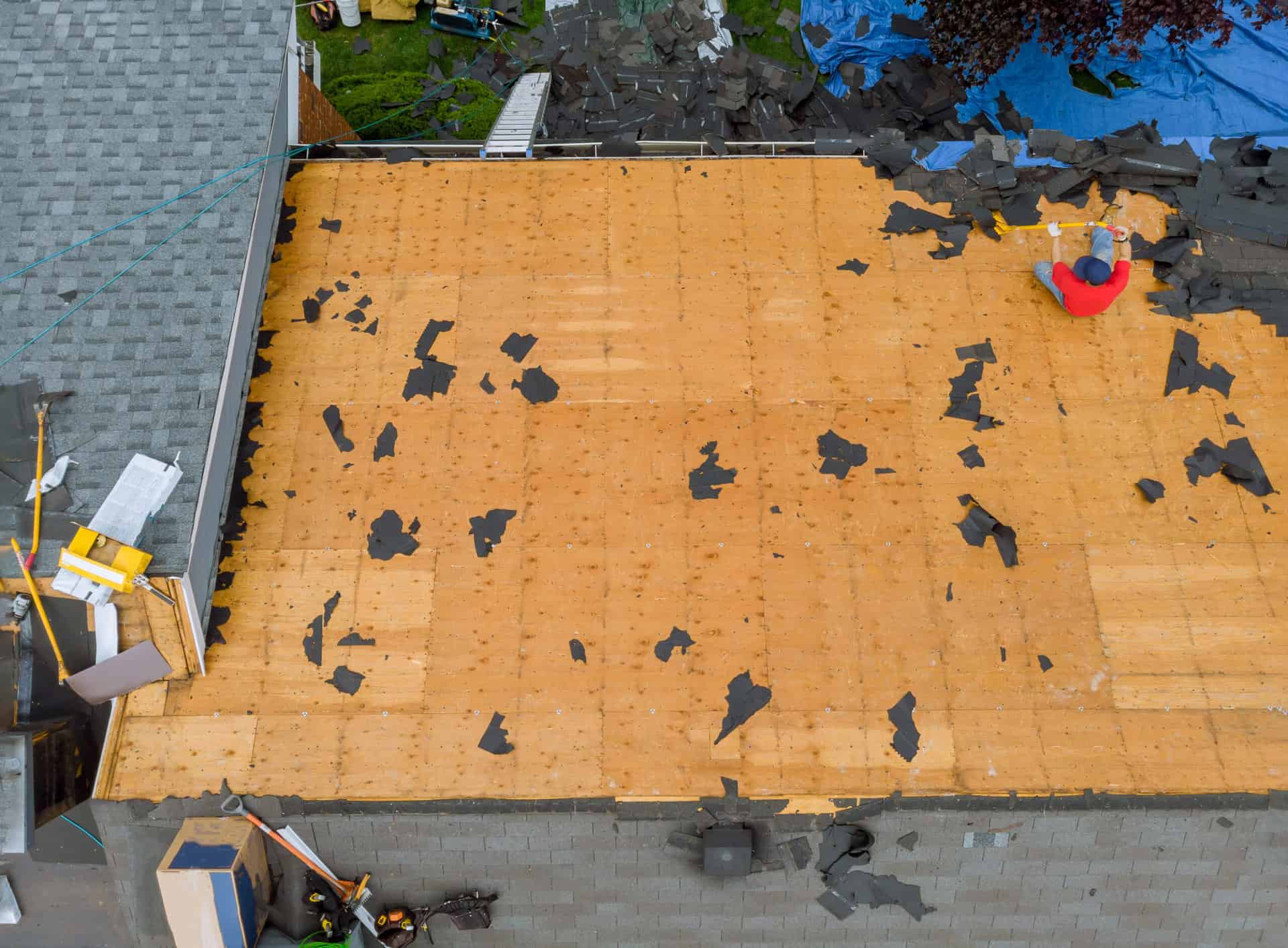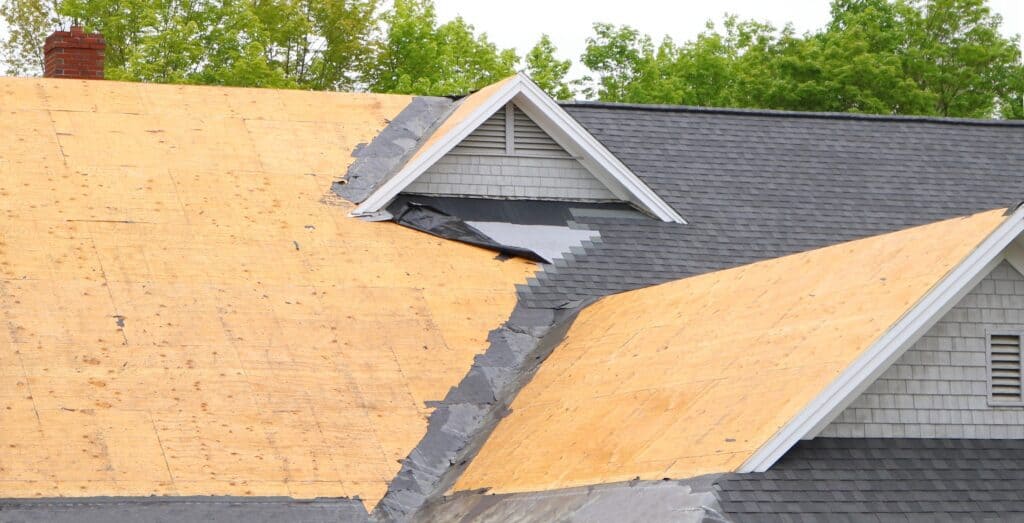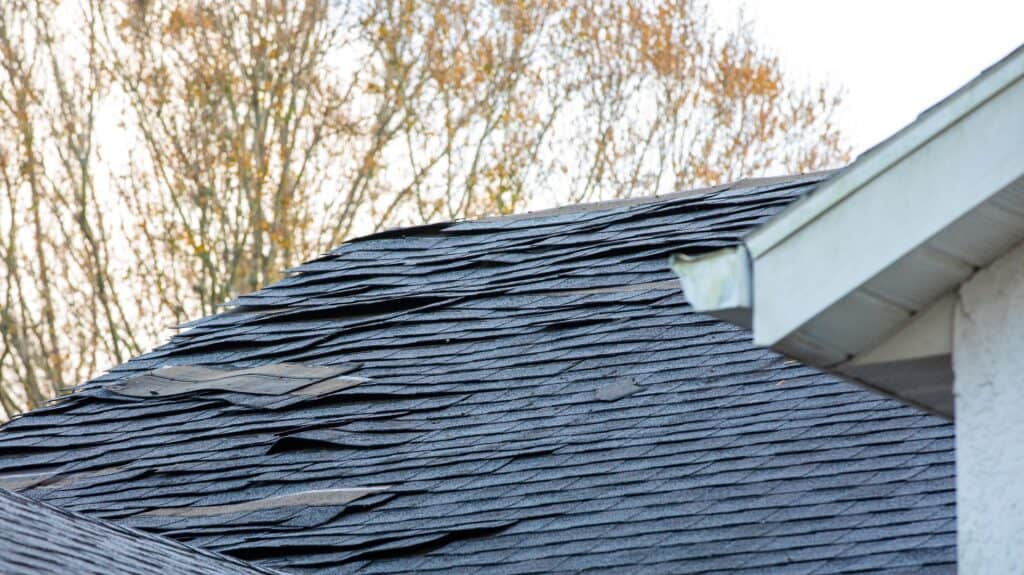
How Often Should A Roof Be Replaced?
GET A FREE INSPECTIONFree Roof Inspection

What are the signs that indicate Roof Replacement?
A roof is a crucial part of any home and its maintenance should be taken seriously. Regular inspection and maintenance of your roof can help you to identify the signs that indicate that it needs replacement. It is important to understand these signs in order to ensure that your roof remains in good condition and lasts for many years.
There are several things that you should look out for such as missing or curling shingles, sagging or buckling areas, water stains on the ceiling, or cracks in the flashing around vents and chimneys. These are all indicators that it may be time for a roof replacement. Additionally, if it is more than 20 years old then it is time to replace it.
How often should you have your Roof Inspected and when is it Time to Replace It?
Roofs are an integral part of any home and it is important to keep them in good condition. This can help you save money on costly repairs and replacements. Regular roof inspections are crucial to maintain the integrity of your roof and identify any potential issues. It is generally recommended to have a professional roof inspection performed at least once a year. However, there are certain situations when more frequent inspections may be necessary. For instance, if you live in an area with severe weather conditions, such as frequent storms or heavy snowfall, it's advisable to have your roof inspected more frequently. If you notice any signs of damage, such as leaks, missing shingles, or sagging areas, schedule an inspection as soon as possible.
As for determining when it's time to replace your roof, several factors come into play. The lifespan of different roofing materials can vary significantly., It's essential to consider the type of roof you have.
Additionally, visible signs of damage or wear such as extensive leaking, significant shingle damage, or multiple missing tiles indicate that your roof requires replacing. Age, extensive repairs, and frequent issues can also be indicators. Consulting a professional roofer is essential for a thorough evaluation of your roof's condition. They can assess the extent of the damage, consider the remaining lifespan of the roof, and provide guidance on whether repair or replacement is the best course of action.
What Factors Determine The Lifespan of Your Roof & How Can You Extend It?
Several factors contribute to the lifespan of a roof, and taking certain measures can help extend its longevity. Firstly, the quality of materials used in the roof construction is crucial. High-quality roofing materials tend to have longer lifespans compared to lower-grade options. Additionally, proper installation by experienced professionals is vital to ensure the roof's durability. Climate plays a significant role as well. Extreme weather conditions, such as heavy rain, snow, hail, or intense heat, can accelerate roof deterioration. Regular maintenance is essential to extend a roof's lifespan. This includes regular inspections to identify and address any issues promptly, such as damaged or missing shingles, leaks, or signs of wear. Cleaning the gutters, removing debris, and trimming overhanging branches can prevent moisture buildup and potential damage. Adequate roof ventilation helps regulate temperature and moisture levels, reducing the risk of mold or rot. Proper attic insulation also aids in maintaining consistent temperatures and minimizing stress on the roof. Lastly, being cautious during roof activities, such as walking or installing equipment, can prevent unnecessary damage.
How Often Should A Shingle Roof Be Replaced?
High-quality shingles, proper installation techniques, and regular maintenance can prolong the lifespan of shingle roofs. Conversely, factors such as harsh weather conditions, poor ventilation, inadequate attic insulation, and lack of maintenance can shorten its lifespan. It's important to monitor the condition of your roof regularly, looking for signs of damage or wear, such as missing or curled shingles, granule loss, or leaks.

How Often Should A Tile Roof Be Replaced?
Tile roofs are known for their durability and longevity, often lasting significantly longer than other roofing materials. The lifespan of a tile roof can vary depending on factors such as the quality of the tiles, installation techniques, climate conditions, and maintenance. Generally, a well-maintained tile roof can last 50 years or more. However, it's important to note that individual tiles may need occasional replacement due to damage or wear. Inspecting the roof regularly for cracked, broken, or loose tiles is recommended. Regular maintenance, such as cleaning the roof and ensuring proper drainage, can help extend its lifespan. Weather events can cause damage to tile roofs, so it's important to assess the condition of the roof after such incidents. If you notice widespread or significant damage, it's advisable to consult a professional roofer to evaluate the situation and determine if any repairs or replacements are necessary. Overall, while tile roofs have impressive longevity, monitoring their condition and addressing any issues promptly can help maximize their lifespan.
How Often Should A Metal Roof Be Replaced?
Metal roofs are renowned for their exceptional durability and longevity. On average, a properly installed and maintained metal roof can last anywhere between 40 to 70 years or even longer. The lifespan of a metal roof is influenced by various factors, including the quality of the materials, the installation techniques, the local climate, and maintenance practices. Regular inspections are essential to identify any signs of damage or wear, such as rust, loose fasteners, or damaged coatings. Additionally, ensuring proper ventilation and promptly addressing any issues can help extend the life of a metal roof. While metal roofs are highly resistant to elements such as fire, wind, and impact, severe weather events or improper maintenance can lead to premature damage. It is recommended to consult a professional roofer to assess the condition of the roof and determine if any repairs or replacements are necessary. By conducting routine inspections and providing appropriate care, a metal roof can offer long-lasting protection for several decades.
Painting your metal roof can benefit it. The paint acts as a barrier against moisture, preventing corrosion and rust formation, which can significantly extend the lifespan of the roof. Additionally, certain types of roof coatings or reflective paints can enhance energy efficiency by reflecting solar heat and reducing heat absorption. This can lead to lower cooling costs and improved comfort inside the building. Painting a metal roof also allows for aesthetic enhancements, as a fresh coat of paint can transform the appearance of the roof, increase curb appeal, and complement the overall design of the property. Moreover, painting a metal roof is a cost-effective alternative to roof replacement, providing a rejuvenated and attractive look without the expense of a complete roof overhaul. It is important to select high-quality paints designed for metal surfaces and follow proper application techniques to ensure optimal results and maximize the benefits of painting a metal roof.
Do I Need An Inspection
Even if you have tile or metal roofs, which can last decades if treated properly, regular inspections are still necessary. Especially after a storm, you want to have a roof inspection done otherwise you could be paying more in the long run for damage done to your home. RoofClaim makes this free and painless where ever you are.

